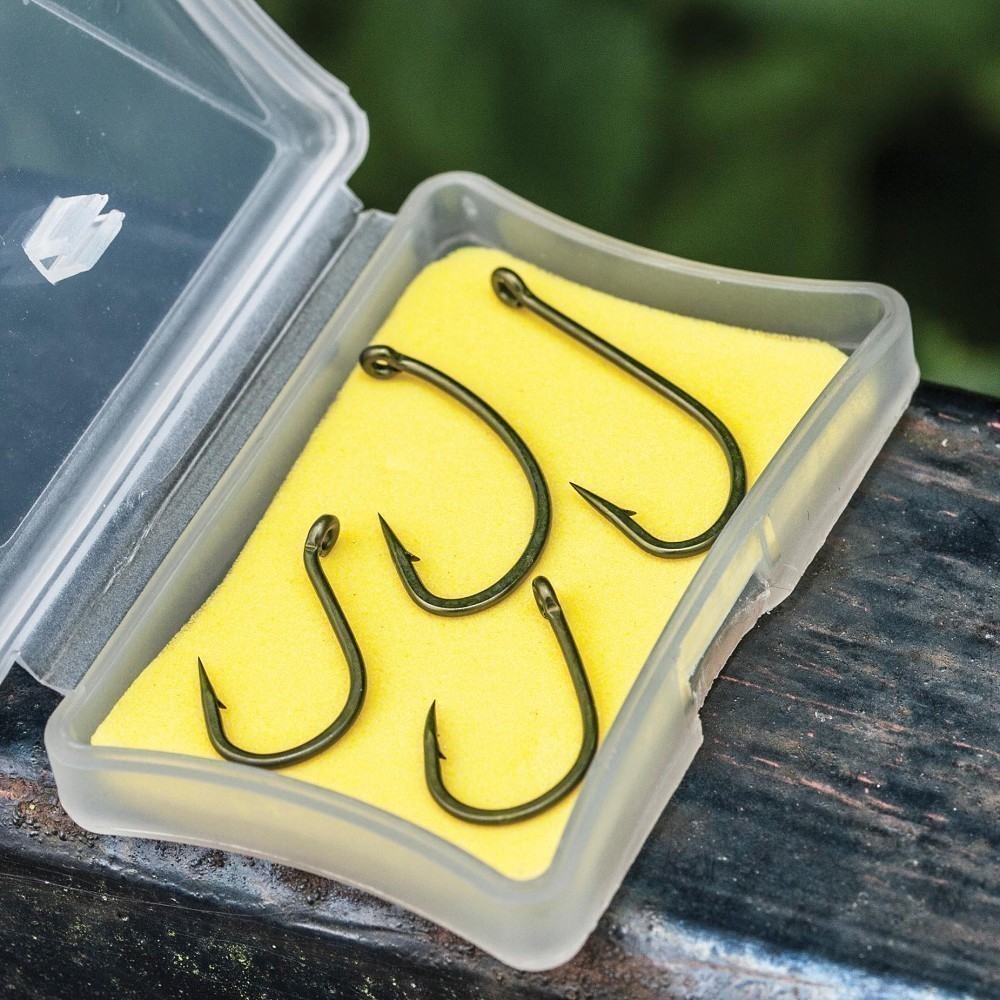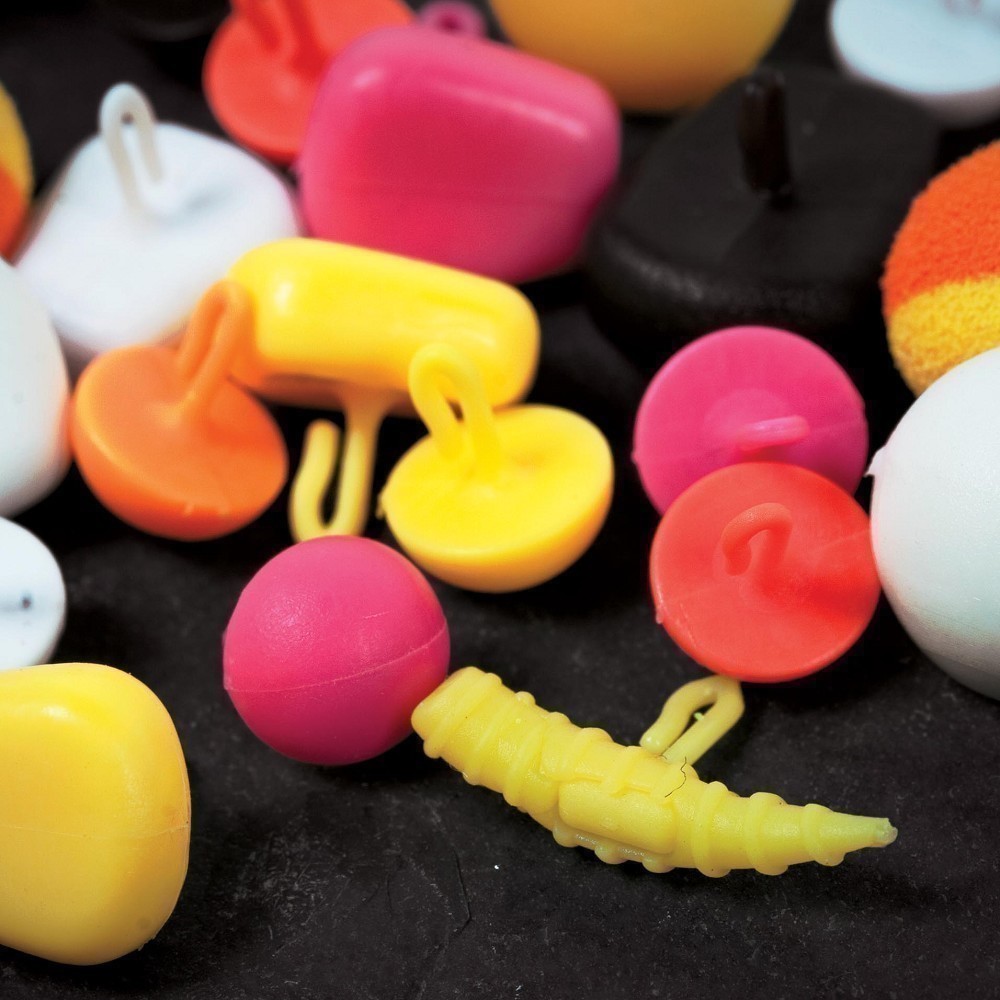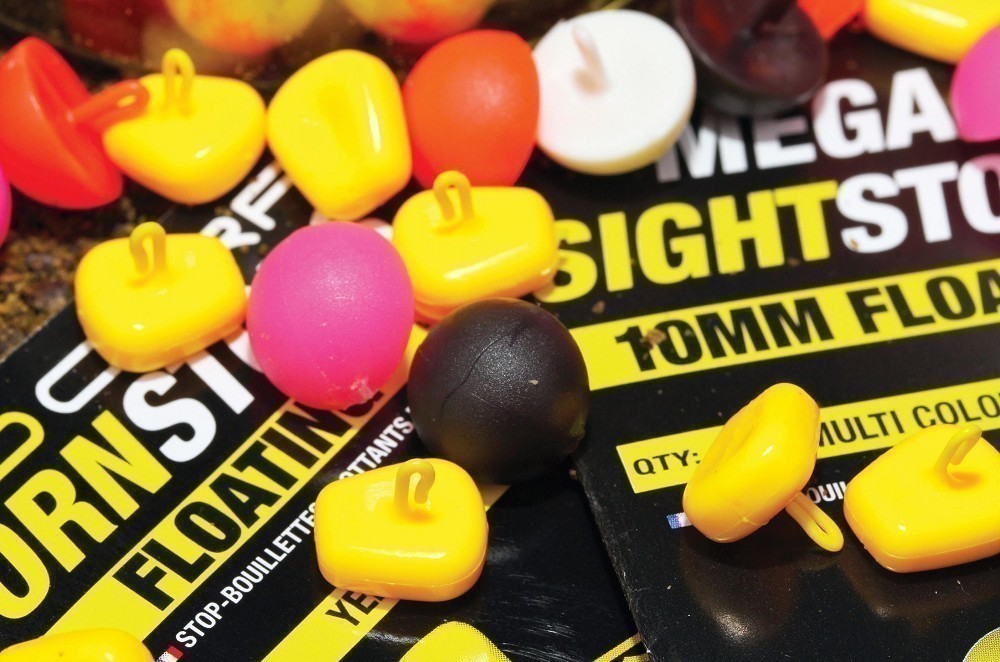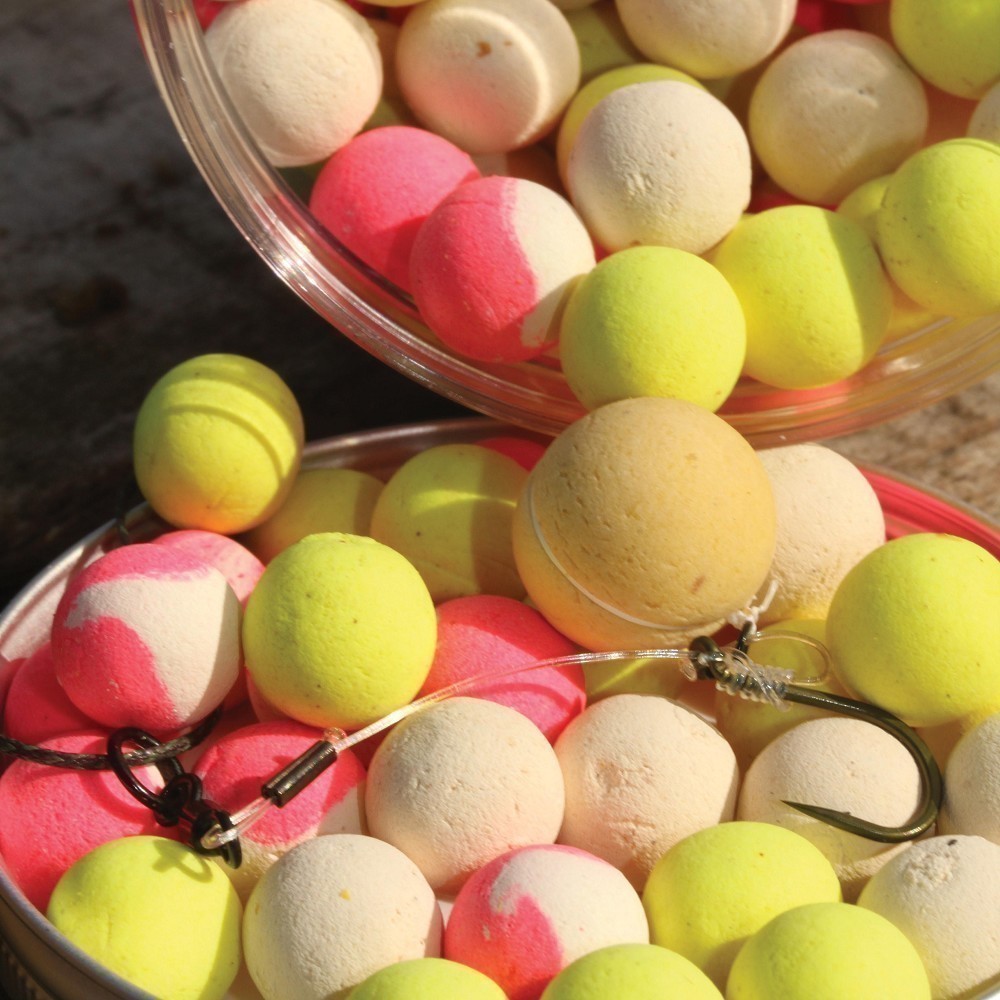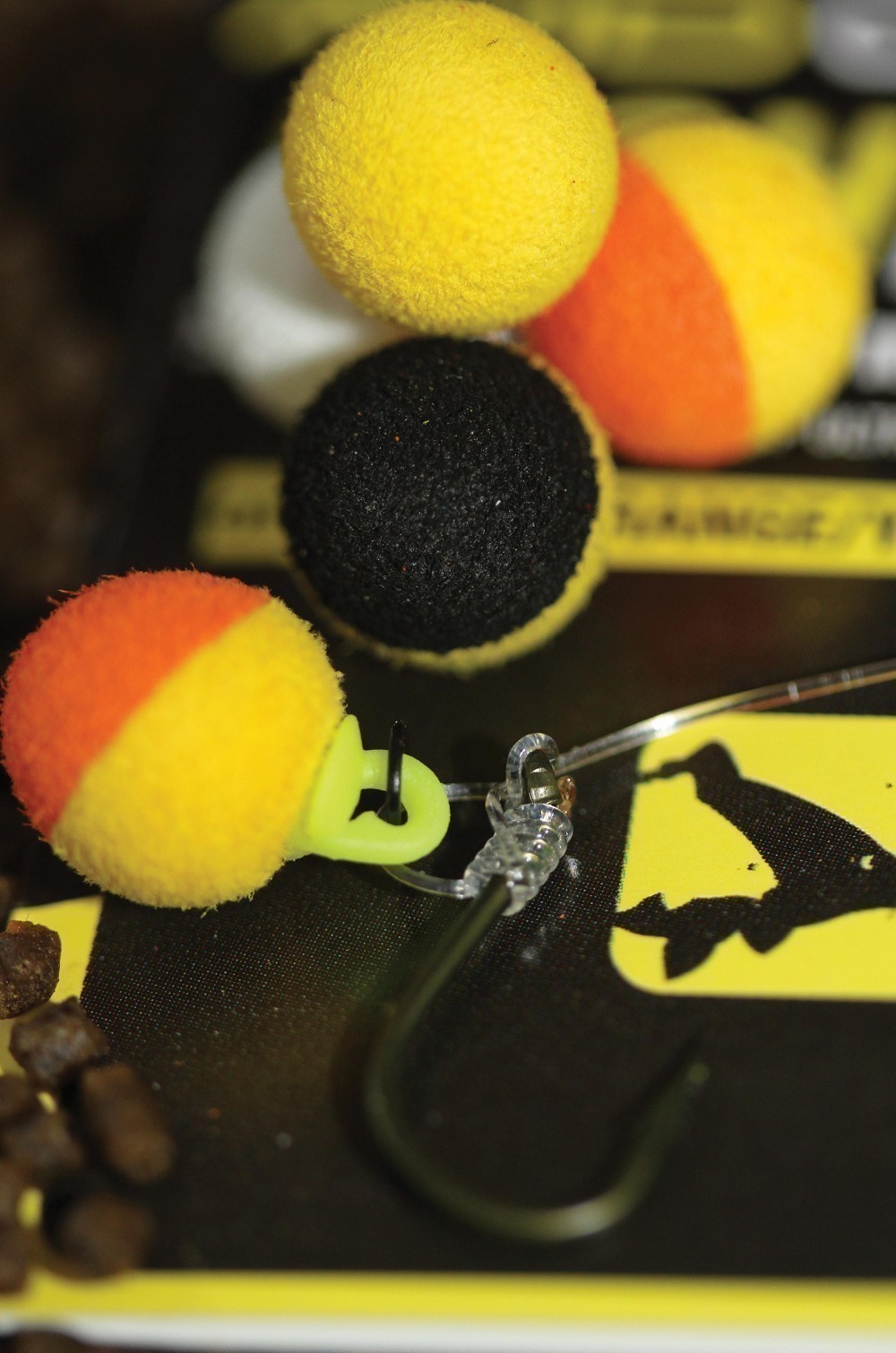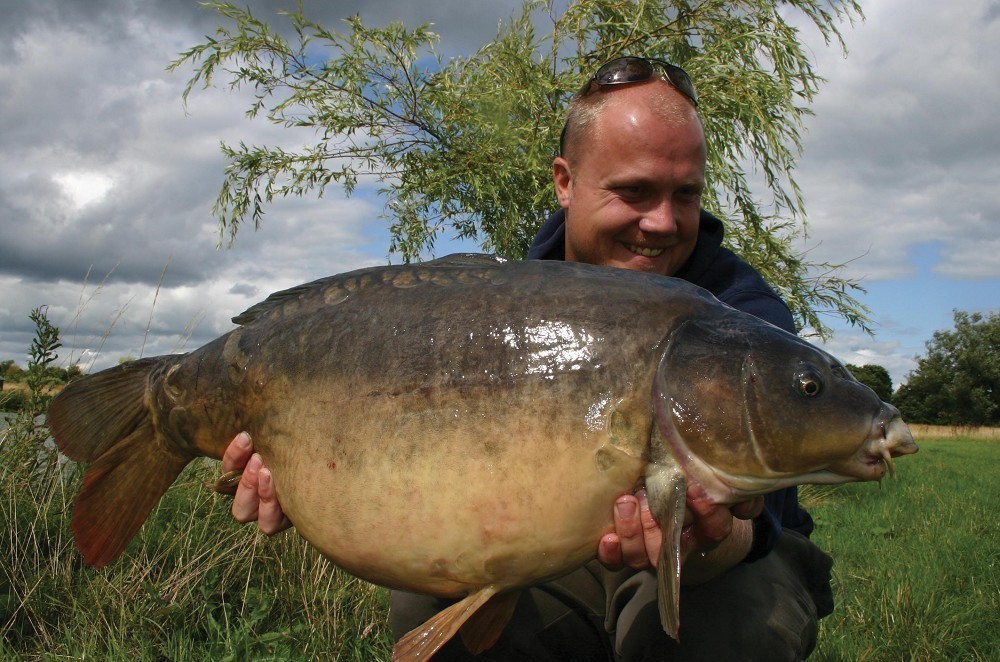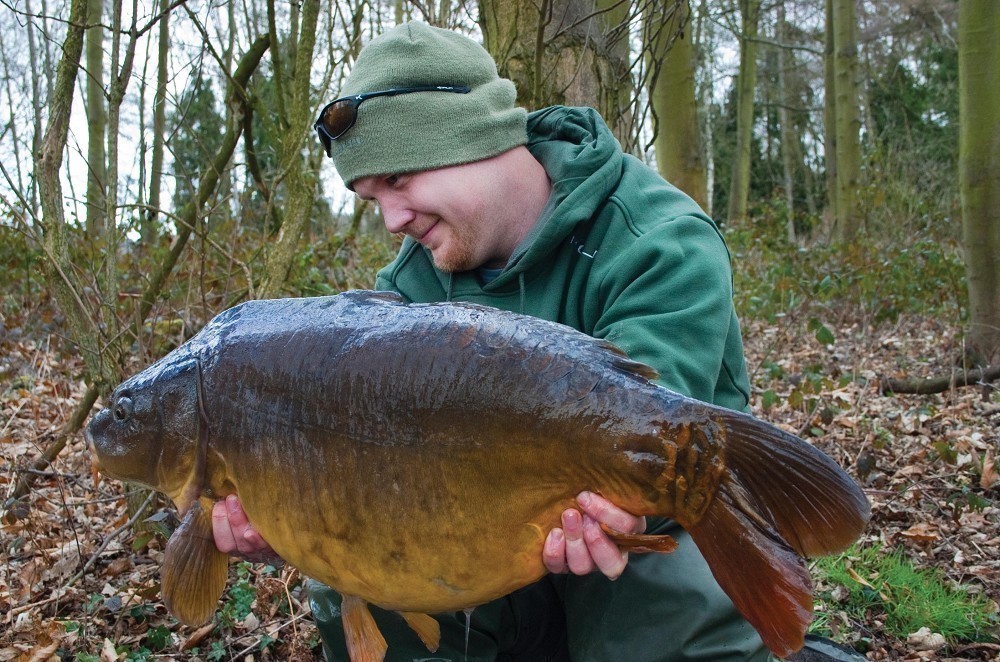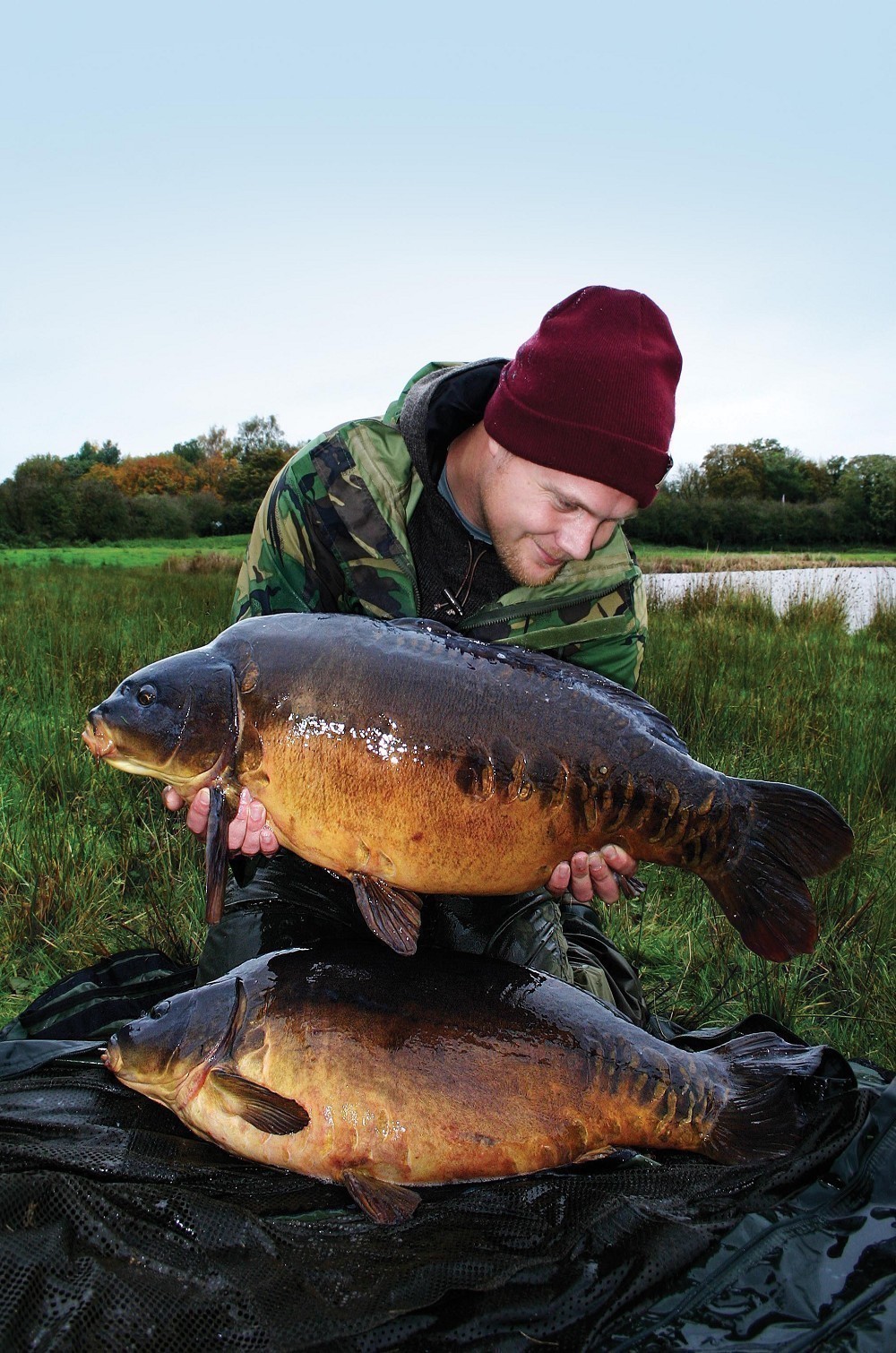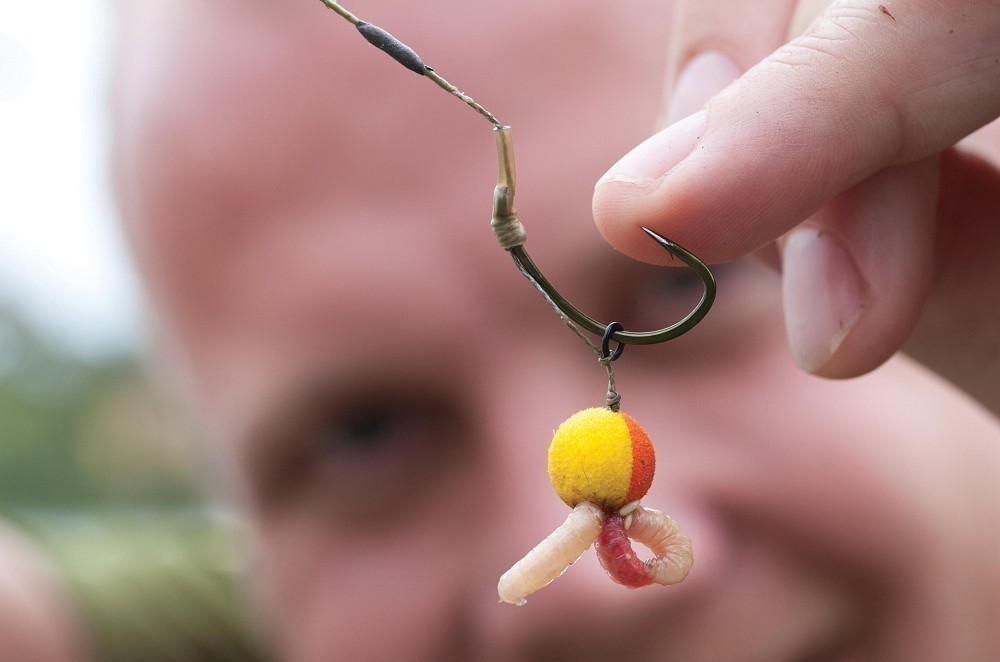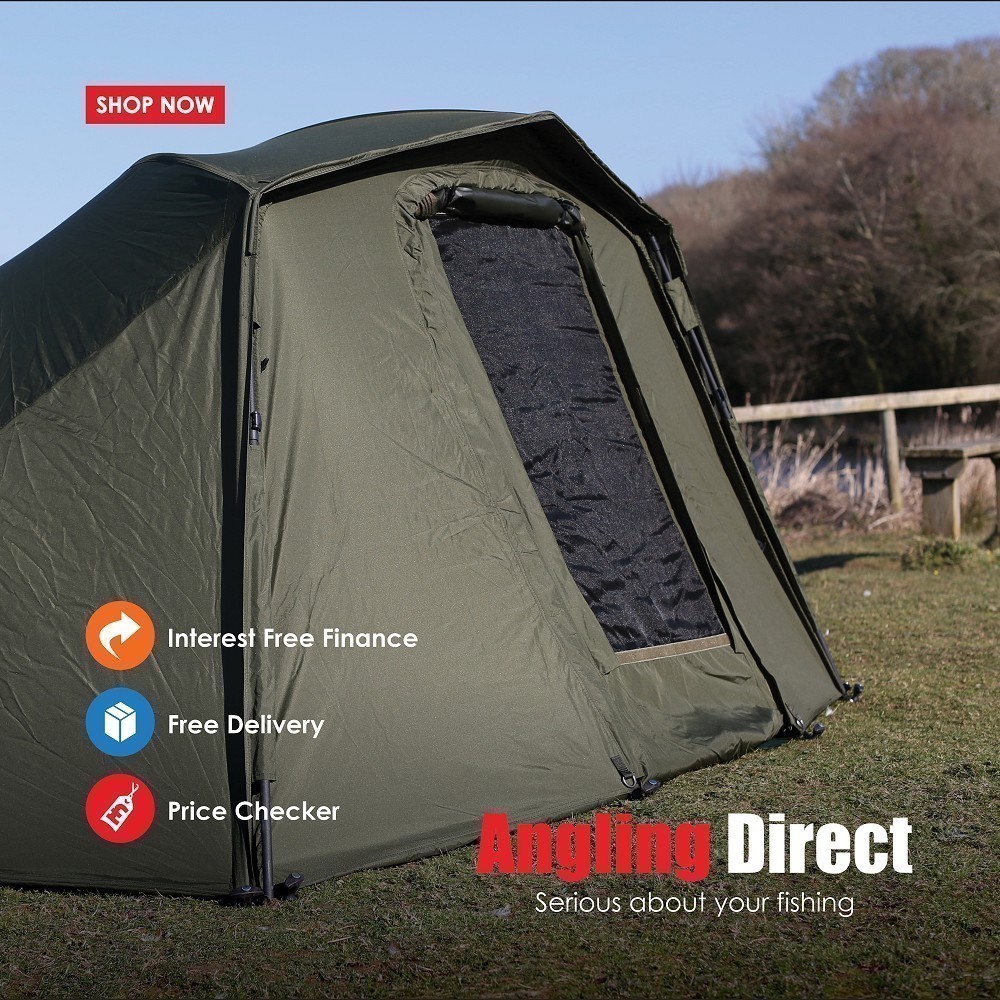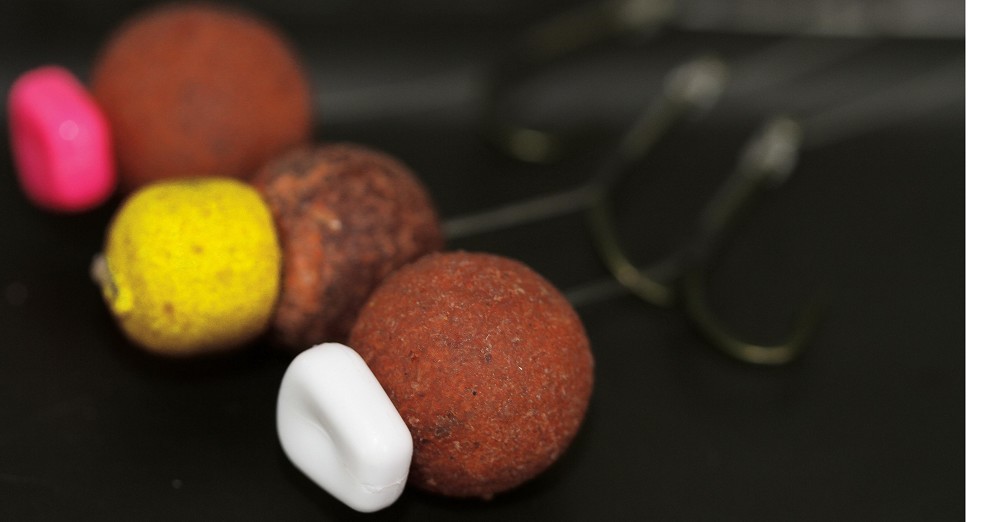
How colourful should your hookbait be?
Just what is the optimum amount of colour to have on your hookbait? Is less more or should we be a little louder and prouder?
Red, yellow, pink, green? No, it’s not a nursery rhyme, it’s a plethora of carp anglers rooting through their gear looking for a blank buster! Does colour make a difference, or are we reading too much into things? Much has been written about carp’s perception of colours and it seems that not even the experts are totally clear on how these cyprinids perceive the world around them. Is pink still pink in 12ft of water on a bright sunny day? Do carp even know what pink is? I have to be honest right now and tell you that I’m not especially worried about this, because all I know is that brightly coloured baits – or at least adding brightly coloured elements to my baits – has helped me catch loads of fish.
I’ve done some reading around this and it’s interesting to hear the findings of fish experts, albeit that their tests mean nothing in the real angling world. You see, carp can see in the infrared spectrum, due to having more advanced eyesight, basically. It’s something we cannot replicate. The same goes for carp seeing in the UV spectrum, but it’s clear that it’s not a case of carp jumping between these modes. They see in all the spectrums, all of the time. We can’t replicate it, either, so we’re basically stuffed!
What I do know is that many other fish and animals have the same visual capacity and in all instances, it’s suggested that contrast between colours can be distinguished. In a series of books called The Scientific Approach to Catching More Fish, by Dr Keith A. Jones, they did some tests on various species of fish to see how quickly they could recognise particular colours. They started by making two yellow cards, one a slightly duller yellow than the other. What they then did was hold the cards against the tank so the fish could see one side of their home was now yellow. With the one card, however, they sent an electrical charge through the water to shock the fish. Whilst both cards were yellow and only very slightly different on a Pantone chart, the fish would only get agitated when the ‘electric’ yellow was placed against the tank. Those fish could distinguish one yellow as safe and the other as the prelude to danger.
They did the same thing with different tones of red, only this time the fish were fed when one type of red was shown to them and not the other. Once again, the fish showed behavioural differences when shown the ‘food’ red. They knew it was a signal. So however fish see colours, it’s clear that they most certainly recognise the difference between them.
It seems, however, that a carp’s visual acuity is actually very poor. If they had an optician’s eye chart in front of them, for instance, they’d only be able to clearly recognize the larger letters most of the time, unless they were very close to the smaller letters. I believe this is why carp approach bait very slowly at times, because only certain parts of the picture will become clear to them as they go. It’s probably why you see a carp just suddenly leave a baited spot that it was previously happy feeding on; it’s spotted something out of place, I guess. When you consider how far apart a carp’s eyes are and how high they sit on the carp’s head, when they get close enough to have things in focus, they still might miss the danger signs due to the blind spot under its mouth. Put your hand in front of your face to replicate this; it’s no wonder they always miss your floaters!
This uncertaint is why I like bright hookbaits. They get close enough and sort react to them quite quickly at times, which is a bizarre thing to watch. Watching a fish suddenly making a beeline for a bait is really cool and many of my best stalking sessions have involved no free bait whatsoever! It works for me when surface fishing and it works for me on the lakebed. Making the hookbait special, it seems, can make that much of a difference.
Large and bright
I must admit that I am wary of using large, bright baits, though I have used them and seen them work. Indeed, in early spring is seems that bigger is best, as the carp go into scavenger mode. Myself and a few friends caught well this spring on a gin clear, pressured water on 16-18mm bright pop-ups. Why? Why not? I couldn’t argue with why it was working, I just know it did.
The stumbling block for many is that humans use bright colours to indicate warnings or danger and I suppose that plays on my mind too. I have witnessed carp spooking away from larger fluorescent hookbaits on more than one occasion and it seems that even a 15mm bait is just too much for the carp at times. This is why much of my fishing is done with very small bright hookbaits or small flecks of colour. It seems you can get away with an 8 or 10mm bait that’s as bright as humanly possible, especially when searching for opportunist fish or trying to get bites more quickly over big baited spots.
At venues like Linear Fisheries where there are many lakes and carp range from 3lb to nearly 50lb, all of the fish will fall to the same little bright hookbaits, however big they are. What’s more, they appear to fall for them time and time again. I went to St. Johns in April with my buddy Roman Buczynski and we both caught well on brightly coloured wafters over lightly baited spots. Not a single orange thing in the swim but orange out-fished everything else. And I caught original fish too, not stockies, work that one out.
Unfortunately, some venues have too many nuisance species to make fishing with a 10mm hookbait a possibility. You often need to fish with tiger nuts or boilies to avoid tench, bream and roach, but that doesn’t mean you can’t use something between that size as a bright topper or presentation aid. There are numerous products out there to help you do this, from rubber hookbaits to bits of foam and specialist boilie stops, but they will all have a slightly different effect on how your bait behaves and how it appears on the lakebed. Take the original Avid Carp SIGHT STOP. This 6mm dome adds a tiny fleck of colour to your hookbait – perfect for warier fish. After all, carp are still carp and like any other fish, a splash of colour can draw their attention more quickly to the bait you really want them to eat. The SIGHT STOPS are of a neutral buoyancy, so whilst they aren’t actually buoyant, they are so light they have little to no effect on the way your hookbait and rig will behave. It really is just a neat fleck of colour to make your hookbait more attractive. There are now, however, buoyant versions of these stops, only they are actually 10mm in diameter; just the right size, in fact, for topping off most company’s dumbbell hookbaits. Simply shaving the top off a dumbbell boilie and using a MEGA SIGHT STOP means you have not only added a larger blob of colour but also some buoyancy. It’s like a snowman that’s just one bait. Perfect for the angler looking for an edge.
The dedicated CORN STOPS that work on a similar principle provide a similar solution, only they obviously imitate grains of sweetcorn. These baits provide more resistance against nuisance species because of their size and will also help ward off the attentions of crayfish and small fry. The buoyant CORN STOPS are a particular favourite of mine when using boilies over a spodded area. It really draws the carp’s attention to your hookbait and makes it somehow more important. Carp are carp and all carp are greedy and inquisitive, so why not play on this with a brightly coloured boilie stop that actually resembles something they’re used to eating?
For me, though, the ultimate way to avoid nuisance species and alter the balance of your rig is by using a proper snowman rig. Most commercially available 10 and 14mm pop-ups aren’t really buoyant enough to hold a 16 or 18mm bottom bait upright, like a real snowman, which is why I prefer imitation baits that actually have some buoyancy. HIGHLITES are a closed cell material so never lose any buoyancy, but their fluffy outer means you can add flavours and sweeteners to jazz them up a bit. These HIGHLITES are so buoyant that you can put a 15mm bottom bait boilie under one of the 10mm HIGHLITES and the rig is still a pop-up! It gives you so many options to alter the presentation and get the bait to sink slowly, and my favourite way to do this is to have the hook so it sits flat on the lakebed, but then the boilie and HIGHLITES actually sit up the whole length of the Hair off the lakebed. It’s a wafter, but there are two baits! That’s a real mouthful for a carp and as they’re expecting the bait to be heavier than just one bait on its own, it really does nail them.
Highlite options
When I fished Weston Park, run by RHFisheries, I found the silver fish a real nuisance when trying to fish my ‘usual’ way. I had to concede to the usual boilie approach and my snowman rigs tipped with a HIGHLIGHT battered everything else into a cocked hat. Honestly, it was daft.
These presentation aids mean you don’t actually need to carry around pop-ups anymore. Seriously. If you think about it, you can change the colour of your hookbait by simply changing what type of ‘stop’ you have on your rig. If you think a pink bait will out-fish the white one you had on earlier in the day, you can change the stop without having to change baits or rigs. And as the HIGHLITES are superior in buoyancy to shop-bought pop-ups, your hookbait collection suddenly looks unnecessary.
Instead, you can do like many of us within Team Avid do and simply soak HIGHLITES in different flavours and attractors. This means you don’t have to just have yellow pineapple baits and orange Tutti Frutti’s. You can mix the colours and the flavours and have something out of the ordinary that no other angler can replicate. Now that really is an edge! I have one large tub of HIGHLITES soaking in sweetener, all mixed colours and sizes, and then another pot are flavoured with Mainline Juicy Fruit. I’ve just done another pot of HIGHLITES that are now soaking in the same attractors from my boilie foodbait. I’ve even sent the white ones a slightly beige colour, so they match the boilie free offerings. The ultimate pop-up!
My favourite rig presentation is a 10mm Yellow/Orange HIGHLIGHT tipped with three maggots, I call it the Jester Rig (regular readers will have seen it in a previous ‘Ology Upgrade piece) and it’s absolutely devastating. My ‘go-to’ rig on pressured venues.
To be honest, I can’t think of any reason to totally remove all colour from the hookbait, unless you have seen for yourself that the carp don’t like it. Don’t believe the hype, find out for yourself! Fishing a dull bait is sometimes akin to fishing with a blade of grass in a field: what’s the point? I know we are not fish and that carp don’t behave like humans, so I’m not for one moment saying that carp prefer the cherry on the cake. In fact, I believe all carp have different habits and preferences and that’s why on a lake that’s heavily stocked, the carp are never all in one place together. There maybe 1,000 carp in a lake, but will they all be eating bloodworm tomorrow on the end of a new southwesterly wind? I doubt it very much. In fact, you’ll probably have around 200 of those fish sulking somewhere after a recent capture, another 500 sitting in the upper layers doing nothing, 200 in weed and snags just hiding away from the world which leaves 100 swimming around avoiding all the carp anglers’ lines and baited areas! All of a sudden, you’re having to work harder for a bite.
I always say the same thing when people ask me about my standpoint on this and I’m sure there are other anglers out there who would concur with my view. If you saw a carp crash out at your maximum casting range and you can literally only put a single hookbait out there to catch those fish, would you really put on a foodbait boilie straight out the bag?
When you have three rods to play with, you can hedge your bets. Find out for yourself which rod goes off first, because sometimes carp really don’t play by the rules. I fished a very old estate lake once with 50-year-old carp in and I gave them loads of credit. They’re old, I thought, they must be really clever. I blanked for ages following the crowd but the first day I put a fluoro on and fed a few Tutti’s I started catching the A Team along with loads of rare fish that nobody had seen before. Go figure!
My fishing is limited by time, so sitting there waiting for a boilie to blend into the lakebed isn’t my idea of making it happen, but I also recognise that making things too blatant can be counter productive, especially when you’re fishing for pressured carp that spend all their lives trying to avoid capture. Instead, I find it best to play on a carp’s shortcomings and their natural instincts – all of them. From their eyesight to what they can sense, smell and taste, I want to play on those things to help me get a bite. Carp behave very strangely at times and that’s why it’s important not to over-think the situation. Rather than question a yellow pineapple pop-up’s ability to keep catching carp from every lake, everywhere, why not just accept it and fish with something that’s so proven and effective? We used to refer to fluoro hookbaits as ‘blank busters’ when I was younger. Now I put bright baits on every rod at the start of a session, or at least baits that incorporate some form of visual attraction!
I’ve seen some writers say they think colour is irrelevant but how can it be? The same anglers will extol the virtues of fluorocarbon main line and camouflaged rigs in the next breath, so it’s better to try these things for yourself than simply follow the thoughts of somebody else. If colour was so irrelevant we wouldn’t insist on olive green tackle, would we? If a carp’s perception of colours was so unimportant, we’d all be on the bank in our usual clothes and wouldn’t worry about camouflaging our white buckets and hiding our lines!
I know some venues have more coloured water and in those cases you might argue that the smell of your bait is more important than the colour, but anybody who has snorkeled or dived in mucky water will know that bright things stand out more in the dark and gloom. The next time the light is fading, put your bright baits, stops and presentation aids out in front of you and see how the fluoro colours are the last ones you lose sight of. Why do you think bobbins are the colours they are? They’re a visual indicator!
So remember this: whilst a carp’s eyes may be far more developed than ours and their perception of colours may differ in different UV and infra-red spectrums, they still seem to get caught all the time on the bright baits we throw in front of them. Let your results do the talking and go on your own experiences. Why blend in when you can standout from the crowd?




